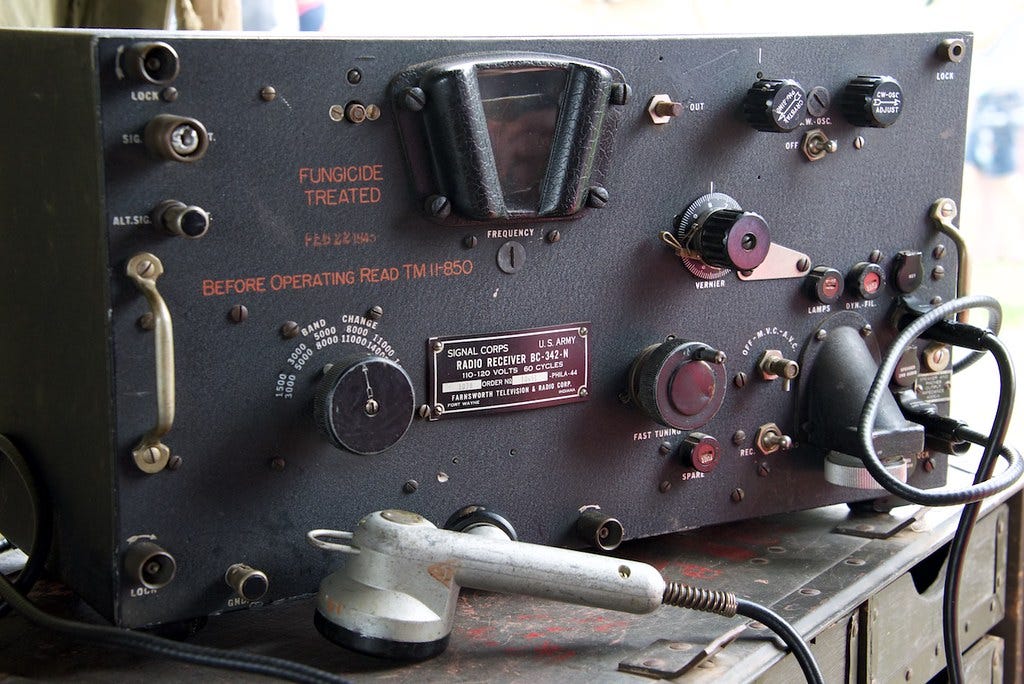The Numbers That Never Stopped: Newfoundland’s Cold War Radio Ghosts
“It sounded like a woman. Robotic. Calm. Saying numbers in sets of five. Over and over. No call sign. No music. Just… numbers. I turned off the radio and I didn’t sleep that night.”
—A shortwave hobbyist, St. John’s, 1983
The Island That Listened Back
Newfoundland. Cold, windblown, jagged like broken glass at the edge of the Atlantic. A place forgotten by most—except for the men who mapped it from the sky. And the voices that whispered across its night sky.
In the 1970s and 80s, something strange drifted through the static on shortwave radios across the island. It wasn’t music. It wasn’t chatter. It was numbers.
Perfectly recited. Repeated. Emotionless. Sometimes by a woman. Sometimes by a child’s voice—tinny and wrong, like a puppet. There was no explanation. No source. No identity. Just strings of five-digit codes on obscure frequencies, looping for hours before going dead.
“Three-seven-one-nine-two… Three-seven-one-nine-two… Three…”
And then… silence.
Some locals called them ghost broadcasts. Others said it was just interference. But among amateur radio operators, it had a name:
Number Stations.
And they weren’t supposed to exist.
Cold War Ice Veins
To understand why those voices may have bled into Newfoundland’s skies, we have to look deeper—underground, into cables and comms hubs, spy networks and sonic walls.
During the Cold War, Newfoundland wasn’t just another Canadian province. It was a pressure point on the global chessboard. From here, the U.S. Navy could watch Soviet submarines slither through the North Atlantic. From here, nuclear bombers could fly under radar, straight toward Moscow. And from here… secrets could be sent. Or intercepted.
The U.S. Naval Station Argentia was the heart of this operation—home to a highly classified surveillance system called SOSUS (Sound Surveillance System). Long underwater cables listened for Soviet submarines like sonar spiders stretching across the seafloor. It was one of NATO’s most prized weapons. And a prime Soviet target.
But what happens when spies need to talk to each other… in secret?
You don’t use phones. You don’t send mail. You use shortwave.
Three: The Woman Who Spoke in Code
Number Stations weren’t like other broadcasts. They never had hosts. Never had schedules.
They appeared suddenly on obscure frequencies—usually around 10–15 MHz—and began their ritual:
A tuning tone
Then a voice. Robotic. Cold. Often female.
Then numbers: “Five… Nine… Zero… Seven… One…”
Then static.
Each transmission could last minutes. Or hours. Most repeated, exactly, for days. And then… vanished.
People in Newfoundland—especially hobbyist radio listeners and fishermen with strong radios—started hearing them.
They weren't alone. These broadcasts were being heard in Cuba, Poland, Spain, and even Gander, Newfoundland.
And no one ever admitted to owning them.
The Spy in St. John's
In 1989, the whispers got louder.
A man named Stephen Joseph Ratkai, a Hungarian-Canadian dual citizen, was caught in a sting operation in St. John’s. His mission? Acquire classified information about the Argentia SOSUS station—from a Canadian Navy officer who turned out to be working for CSIS.
Stephen wasn’t just some nosy local. He had training. He had cover stories. And, according to reports, he had instructions—possibly sent over encrypted shortwave radio.
The theory? Soviet handlers used numbers stations to beam assignments to spies like Ratkai. The transmissions were impossible to trace, impossible to block, and could be received anywhere on Earth with a cheap radio.
“We believe Mr. Ratkai was being directed by handlers overseas through encrypted radio messages,” said a Canadian intelligence source in a 1990 interview. “We don’t know exactly how.”
Keep reading with a 7-day free trial
Subscribe to The Newfoundland History Sleuth to keep reading this post and get 7 days of free access to the full post archives.




